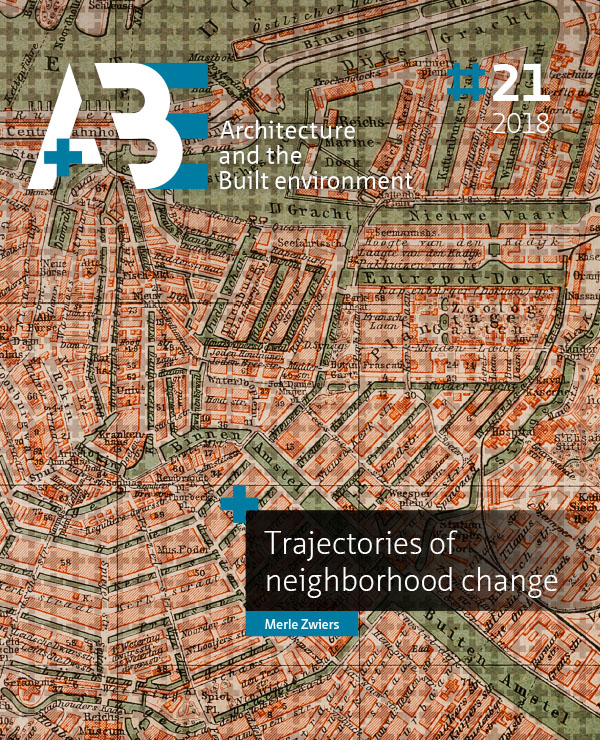Introduction
DOI:
https://doi.org/10.7480/abe.2018.21.3524Abstract
The main aim of this dissertation is to improve our understanding of pathways and drivers of ethnic and socioeconomic neighborhood change over time. This dissertation specifically focuses on the following research questions: (1) What trajectories of neighborhood change can be identified over time? (2) To what extent can neighborhood change be explained by population change and housing stock characteristics?
This dissertation contributes to the literature in two ways. First, there is an empirical gap in the literature on how typical the neighborhoods that change are, and the prevalence and extent of change across all neighborhoods (Tunstall, 2016; Zwiers et al., 2017). The literature has been dominated by the assumption that gentrification and decline are wide-spread developments that quickly transform cities. However, a small body of research argues that neighborhoods are rather ‘slothful’ and that significant neighborhood change is rare and may take several decades (Hulchanski, 2010; Meen et al., 2013; Tunstall, 2016). Prior studies on neighborhood change have been limited by a short-term perspective, often reducing neighborhood change to the difference between two points in time. The lack of longitudinal analyzes of neighborhood change is an important lacuna that affects urban planning and neighborhood policies. This dissertation aims to add to the literature on longitudinal studies on neighborhood change, both theoretically and methodologically. By analyzing neighborhood trajectories over longer periods of time, this dissertation provides insight into different trends over time and the prevalence and rate of change. The innovative methodologies used in this dissertation contribute to broadening the scope of statistical methods for the analysis of longitudinal neighborhood change. This dissertation employs new visualization techniques to illustrate the various pathways of change. In addition, it uses advanced statistical models that allow for causal analysis and the identification of non-linear patterns of neighborhood change.
Second, this dissertation focuses on several determinants of neighborhood change. In the literature, residential mobility has long been seen as the most important driver of neighborhood change. However, residential mobility is influenced by structural factors such as the quality of the housing stock, local housing markets, and government policy (Meen et al., 2013; Nygaard & Meen, 2011). This dissertation will show how the housing stock and urban restructuring programs shape patterns of residential mobility and neighborhood change. Moreover, this dissertation argues that residential mobility is not the sole driver of neighborhood change by also analyzing other types of population change, such as demographic change and in-situ change. An emerging body of research has argued that neighborhoods can change without any significant in- and out-migration (Bailey, 2012; Finney & Simpson, 2009; Teernstra, 2014). Processes of natural growth and ageing, as well as changes in the socioeconomic status of the sitting population, can change the population composition and status of neighborhoods. This dissertation contributes to a better understanding of the role of housing stock characteristics and population dynamics in shaping the spatial distribution of different ethnic and socioeconomic groups.

